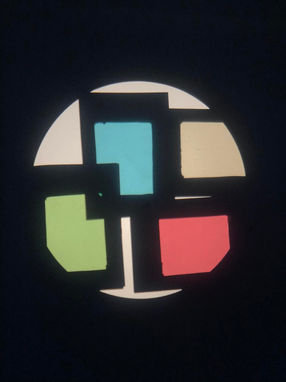Vuletic
Week Two: Cinematic Site-Sequence
Weekly Learning Outcome
-
Develop spatial sequence from your site documentation.
-
Develop the second blog entry which documents and analyses the second week of studio experimentation.
-
Further research pre-cinematic devices and cinematic spaces, drawing on Giuliana Bruno's text.
Fort Lane Site Visit with Device
Fish Eye Lense
Visiting Fort Lane with my lenses device. Unfortunately I had Covid when the class went for the site visit, therefore I had to go on my own, I was unsure of the entrances to the car park as well a imperial lane which is the result of all my images being on Fort Lane. After exploring Fort Lane which first grabbed my attention I plan on revisiting and exploring the other protentional sites.






Being inspired by the Fish eye lense I was interested to see how it would warp my perspective while cohesively working with my coloured lenses. I noticed tha although the lense creates a wide angle, I tended to feel more enclosed. The circular lense as opposed to a normal rectangular lense deterred my vision and as a result did create an 'underwater' illusion that inspired the creation of the lense. Ultimately I did enjoy working with the lense, however, I feel that my attention is mainly drawn to how colour mainly changed the way I perceived the space.
Collage, Blend, Layer



Exploring layering through my site visit captures.
Projector Experimentation
Exploring my cinematic device under a projector. I really enjoyed playing with the projector and seeing how the lenses worked together rather than with the site. I was able to see the way the colours blend as well as the unique forms that were created with the black frame. I also decided to use the circular patterns to see how these react with the colour and the way it entirely changed the way I perceived the initial shape.
Sequencing

Site Research
The former Imperial Hotel
"Land Reclamations
Fort Street was originally known as 'Fore' Street, and marks the original Commercial Bay Shoreline. The Māori name for the area is Onepanea and is a place of cultural significance to Tangata Whenua. The Fort Street shoreline was a key landing point during Auckland's early settlement, and central to Aucklands role as a major trading centre. Surveyor-General Felton Matthew provided for allotments of reclaimed land to be developed on tidal mudflats of Commerical Bay in his first plan of Auckland. Fort Lane was part of the original post - reclamation street plan, created to service warehousing at the rear of buildings fronting Queen Street. The dip in the lane reflects settlement of reclamation of material. The first land reclamations started in 1859, with 9 acres of the foreshore between Fore (Fort) Street and Customhouse (Custom) Street being reclaimed in the 1860s. Subsequent reclamation was undertaken to improve harbour facilities at a a time when the colonial capital was rapidly expanding.
Metropolitan Hotel
A two-storey timber hotel was built on the corner of Fort and Queen Streets, known as the Metropolitan Hotel (licensed from 1858). Construction of the Metropolitan Hotel was directly linked to the bustling trade and activities on the waterfront. It was built on piles sunk into the foreshore. With financial assistance from Hancock Brewers, a three-storey brick hotel was built in its place in 1883. The brick hotel was designed in italianate architecture style by well known Auckland architects Edward Mahoney & Son, and constructed by builder John Currie.
Imperial Hotel
The Colonial Mutual Life Assurance Society took over the Metropolitan Hotek lease in 1885. Based in Melbourne, they used part of the building as their Auckland office. The hotel was renamed the Imperial Hotel, and later incorporated neighbouring Grahams Building's; and Webbs Buildings (former offices of the Auckland Harbour Board and Auckland Gas Company), designed by architect James Wrigley. The bluestone wall visible on Fort Lane may date from the original 1861 Webbs Buildings. Structures that appear to be encased within parts of the current Imperial Hotel, such as the 1860s Graham Buildings, are directly linked with the commercial and administrative activities of Auckland new harbour front on Customs Street. Hancock brewers bought the Imperial Hotel in 1924, and in 1966 it became known as the Lion Tavern. The first and second floors were redeveloped as backpackers accomodation in 1989, and subsequently became known as Queens Street Backpackers."

Fort Lane, 1973

Fort Street, 1924

Fort Lane, 2022
Light Leaks
"A light leak is a hole or gap in the body of a camera, or other optical instrument, where light is able to "leak" into the normally light-tight chamber, exposing the film or sensor with extra light. This light is diffuse, although parts within the camera may cast shadows or reflect it in a particular way. For most purposes this is considered a problem. Within the lomography movement it is seen as a positive effect, giving photos character.
Key Words:
Unpredictable, accident, colour, light, whimsical, playful, character, dimension, leaking, nostalgia, discovery, exposure, blur,
Light Leaks applied on my site device images













Site Sequence - Layering - ''Double Exposure"



Interruption, unpredictable, accident, colour, light, whimsical, playful, character, dimension, leaking, nostalgia, discovery, exposure, blur, shadow, grain, layer, hidden, blend,












































